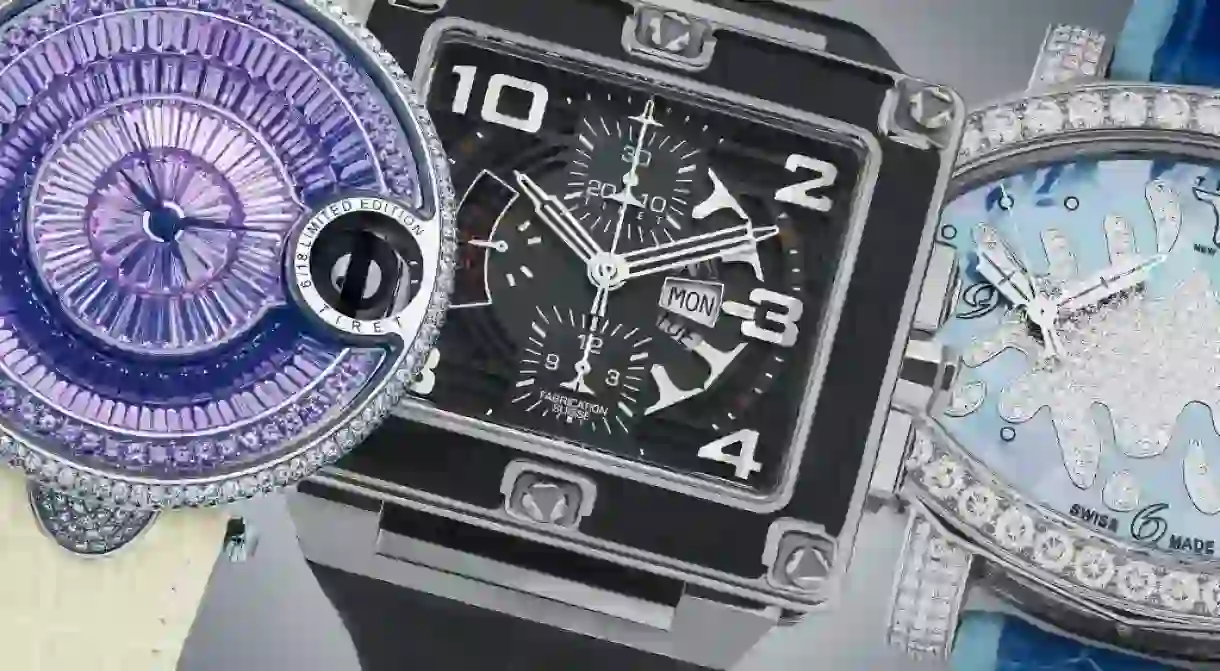Why Luxury Watches Are the Ultimate Unisex Accessory

“It’s very in for a woman to wear a man’s watch,” says Daniel Lazar, CEO and head designer of the luxe watch brand TIRET over coffee at the Mercer Hotel in SoHo. TIRET has set the bar for jewelry-inspired watches for over 20 years. But what makes a luxury watch a worthwhile investment?
Back in the day, “When you’d retire, you’d get a Rolex,” says Lazar. But around 1998, the luxury goods market opened up, and people did not need special occasions to indulge in the ultimate investment accessory: a luxe timepiece. Lazar, who is constantly looking to innovate watch design, says very clearly, when you bankroll a TIRET, you’re not getting a Rolex. What you’re getting is “outside the box.”
Says Lazar, “I have a client in Singapore who sits in his Bentley wearing his square-faced TIRET and starts conversations with the ladies.” It’s no wonder TIRET has made a splash in the exclusive world of luxe timepieces.
Because Lazar, who is originally from Russia, has a background as a jeweler working with diamonds, precious stones, and platinum, he’s in the ultimate position to define luxury.

Luxury is defined by exclusivity
Luxury watches are not mass produced, in fact, quite the opposite. “I make approximately 25 pieces of each style (excluding custom one-offs). Around the world, there’s a very limited run of my watches.” A non-custom TIRET luxury timepiece starts at $125,000, while a one-of-a-kind can go for $500,000. It takes Lazar approximately two years to produce the prototype for a single style of watch.

Luxury is defined by reputation
“For their custom TIRET watches, I inscribed the initials of Anna Wintour and Kanye West under the splash dial,” says Lazar, well aware of the influence celebrities have on developing the exclusivity of a luxury brand.
From rappers to starlets, celebrities wear luxury watches because, well, they have access to the finest luxury goods. “In Hong Kong,” says Lazar, “you have to qualify to get a TIRET watch. You have to know the brand.” Reputation is not only limited to the wearer, Lazar is able to source quality materials like the Swiss-made mechanisms, to the diamonds and stones mined “by these three guys who can collect the stones from the mountains; they don’t work with just anybody.”

Luxury is defined by quality materials
There are two facets to the quality materials that define a luxury watch. The first is the time-keeping mechanism. The Swiss group ETA has a monopoly over the so-called movements used in mechanical and automatic watches produced by luxury watchmakers. Says Lazar, “the more parts inside the movement, the more value for the time-keeping mechanism.” And, because the caliber of movements is so high, “You have to maintain [the mechanism] like a car. Every two years you have to send the watch to be taken apart, to get a cleaning, a polish, and to oil the inner mechanism.”

The second defining feature of a luxury watch is the bling. Diamonds and precious stones adorn the dial and the face, a trend in men’s watches that Lazar takes credit for. Gold watches are more expensive (but also more malleable) than stainless steel watches, according to Lazar. “But platinum is a bit more strong than 18-carat gold.” Finally, some TIRET watches are accessorized with a python or leather band.
Although TIRET defines luxury, for Lazar, the jewelry-inspired line “is so personal. It’s my baby. I want to work with people who have responsibility for the brand.”













